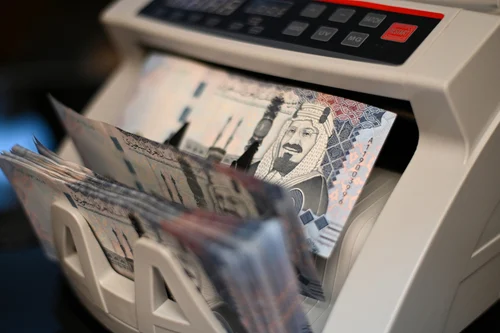Publisher: Maaal International Media Company
License: 465734
S&P: Gulf banks that rely on capital markets or private equity investments are more vulnerable to risks
اقرأ المزيد
Standard & Poor’s, the credit rating agency, believes that Gulf banks are able to deal with the repercussions of potential US tariffs, thanks to their good levels of liquidity, profitability, and capital. Regarding market volatility and investor risk aversion, the agency expects capital market volatility for banks to remain manageable, adding that losses are unlikely unless banks need to liquidate some investments to deal with capital flight.
For banks operating in the debt or equity capital markets advisory sector, the agency explained that current volatility could lead to a decline in revenues. However, these activities contribute only a modest percentage of bank revenues, on average. The agency indicated that Gulf banks that rely on capital markets or private equity investments may be more vulnerable to risks. The agency expects the US Federal Reserve to cut interest rates by only 25 basis points this year, explaining that Gulf central banks will follow suit, which will support the profitability of Gulf banks. However, the agency stated that if interest rates fall more sharply, lower margins and a potential slowdown in lending growth could weaken bank profitability. The agency expected that Gulf banks would experience a decline in capital flows, and some may also experience a flight of funding. In this regard, the agency developed hypothetical stress scenarios that assume a significant flight of external funding, including a flight of 50% of interbank deposits to non-residents and 30% of non-resident deposits. It stated that Qatari banks are more vulnerable than other systems due to their large net external debt positions, but the Qatari government’s strong track record of supporting banks and its ability to assist them during crises mitigates the risks. The agency reported that the position of banks in Saudi Arabia appears comfortable, but their inability to access capital markets may reduce their ability to finance major projects. It added that Emirati banks have the strongest net foreign asset position in the region, meaning they enjoy the highest degree of resilience to capital flight, according to the agency’s hypothetical scenarios. Regarding asset quality, the agency revealed that before the outbreak of tensions, Gulf banks demonstrated strong indicators of their asset quality, with the average non-performing loan ratio for the region’s 45 largest banks reaching 2.9% by the end of 2024. Banks also had retained provisions exceeding 150% of their non-performing loans during the same period. Furthermore, the profitability of Gulf banks remains relatively good, with a return on assets at the end of 2024. The agency added that banks continue to maintain strong capitalization, with the average Tier 1 capital ratio reaching 17.2% during the same period. Escalating global trade tensions are negatively impacting global credit conditions and threatening an environment that, until recently, was favorable for most borrowers. If the US administration implements the suspended tariffs at the rates initially announced, the economic repercussions will be broad and profound. However, the announced suspension of tariffs for all countries except China is for 90 days, and the prevailing uncertainty is likely to further deteriorate business and consumer confidence and heighten concerns about corporate investment, employment, consumer spending, and overall economic activity.








